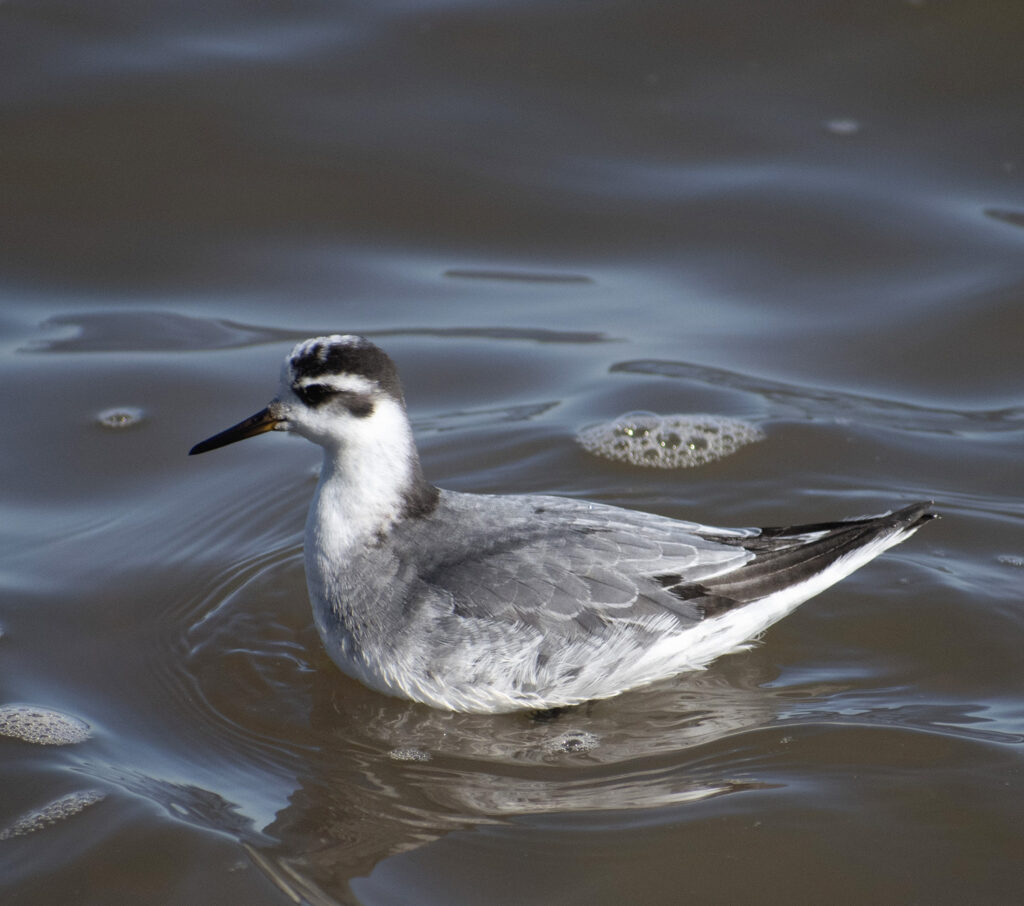
by Grace Huffman
Earlier this month I went up to Lake Carl Blackwell with former president Betsy Hacker and Brian Marra. We initially went there to look for a Red-necked Grebe, although the night before photos had been posted of an odd-looking phalarope there too. We searched the dam with Braden Farris but were unsuccessful in locating the grebe. Working our way around the lake we went over to Ski Point to scan over the lake again, and that’s where Braden found the phalarope. While initially reported as a Wilson’s Phalarope, this bird was in fact a Red Phalarope, the rarest of all phalaropes here in Oklahoma.
Phalaropes are unusual shorebirds. According to David Sibley, they have lobed toes which help them swim in the water. This also aids in their feeding technique, where they will spin around in circles stirring up small items in the water for items like small insects and crustaceans. Watching a large group spinning makes me dizzy! In all phalarope species the females are brighter than the males, and do all of the wooing. Once they’ve chosen a nest site and she’s laid the eggs, she leaves the male to incubate the eggs and raise the young. Meanwhile, she’s possibly with a second male to lay another clutch. Red Phalaropes nest in the Arctic regions of northern Alaska and Canada, and migrate as well as spend the winter down both coasts. Of all three phalarope species (Wilson’s, Red-necked, and Red), Red is the least likely to turn up here in Oklahoma, so when one does show up it’s a big deal.
This time of year all phalaropes are in nonbreeding plumage, and the one at Carl Blackwell was no exception. It was mostly white, black, and gray, with a tiny bit of yellow at the base of the bill. It was right up next to the edge of the shore, bobbing about, feeding and acting like it was oblivious to the four birders staring at it and taking photos (I took over a hundred shots). It was so close to us at times I didn’t even need to crop most of my photos when editing!
According to AllAboutBirds.org, it’s difficult to monitor the overall population of Red Phalaropes because they nest so far north. However, they are currently listed as Least Concern, although being ocean birds they are at risk from oil spills. Hopefully the next time one wanders into Oklahoma you will be able to see it!
References: The Sibley Guide to Birds 2nd edition, AllAboutBirds.org
